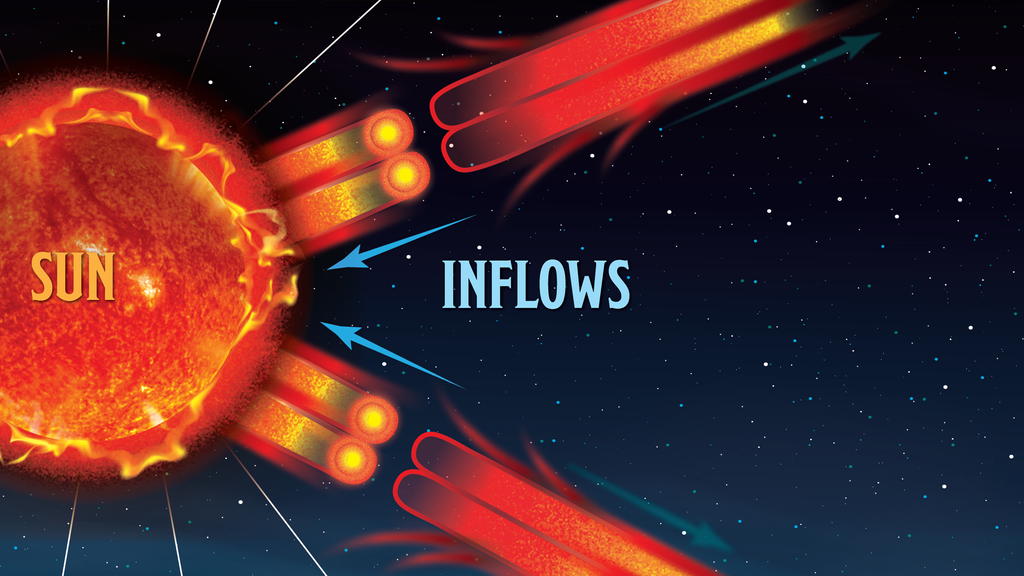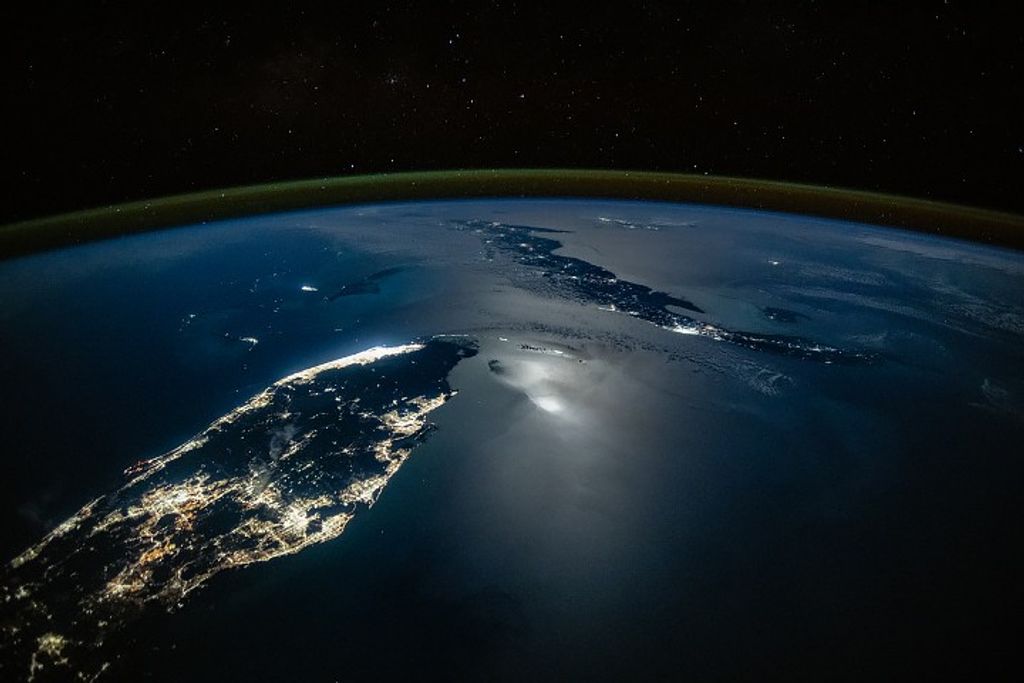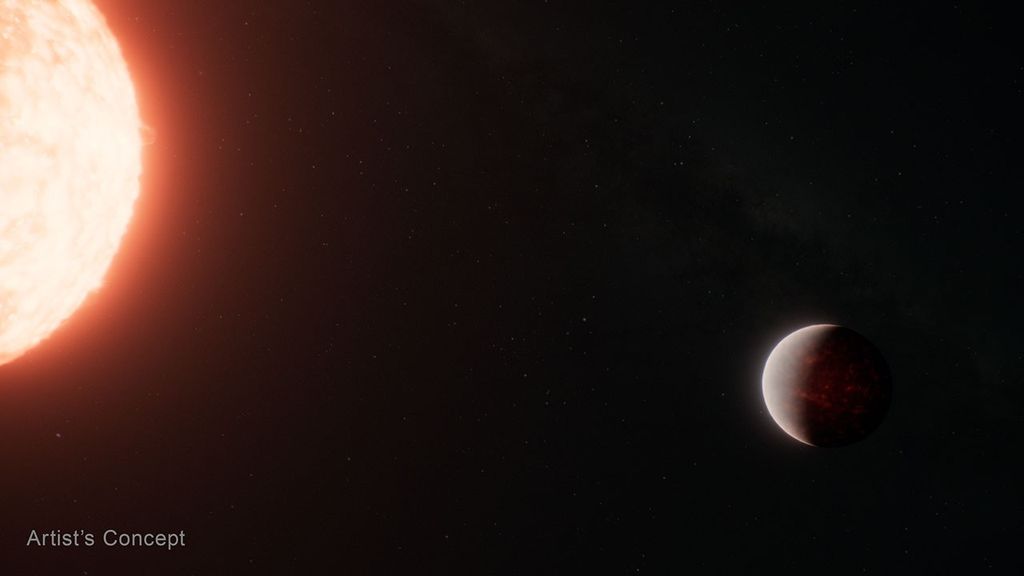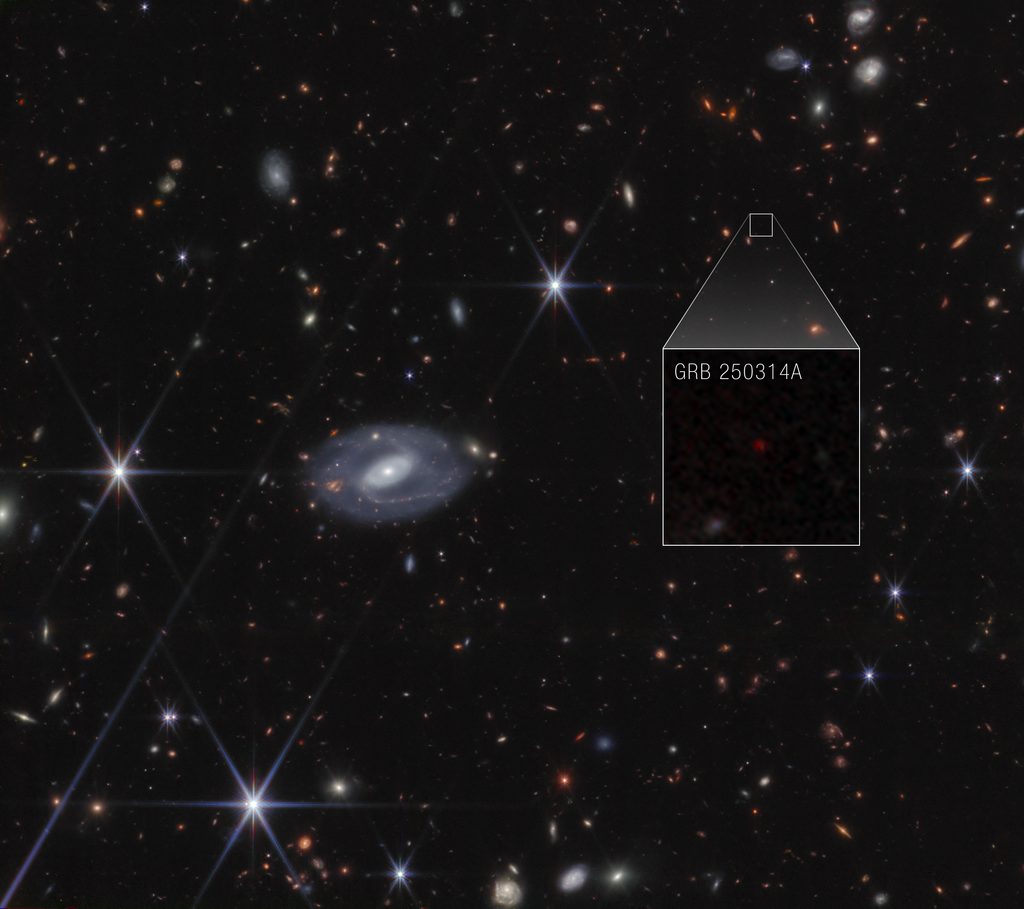NASA Hubble Space Telescope's new Advanced Camera for Surveys (ACS) has given astronomers their clearest view yet of the dust disk around a young, 5-million-year-old star. Such disks are expected to be the birthplace of planets. The star, called HD 141569A, lies 320 light-years away in the constellation Libra and appears to be a member of a triple-star system. The image at left shows the star and disk as it appears in space. The system is slightly tilted when viewed from Earth. The photo at right portrays the system if astronomers could view it from above.
1 min read
Hubble Reveals Complex Circumstellar Disk
NASA Hubble Space Telescope's new Advanced Camera for Surveys (ACS) has given astronomers their clearest view yet of the dust disk around a young, 5-million-year-old star. Such disks are expected to be the birthplace of planets. The star, called HD 141569A, lies 320 light-years away in the constellation Libra and appears to be a member of a triple-star system. The star was first identified as a candidate for a circumstellar disk in 1986. An excess of infrared radiation associated with the star provides telltale evidence for the presence of a dust disk.
NASA, M. Clampin (STScI), H. Ford (JHU), G. Illingworth (UCO/Lick), J. Krist (STScI), D. Ardila (JHU), D. Golimowski (JHU), the ACS Science Team and ESA
Related Images & Videos
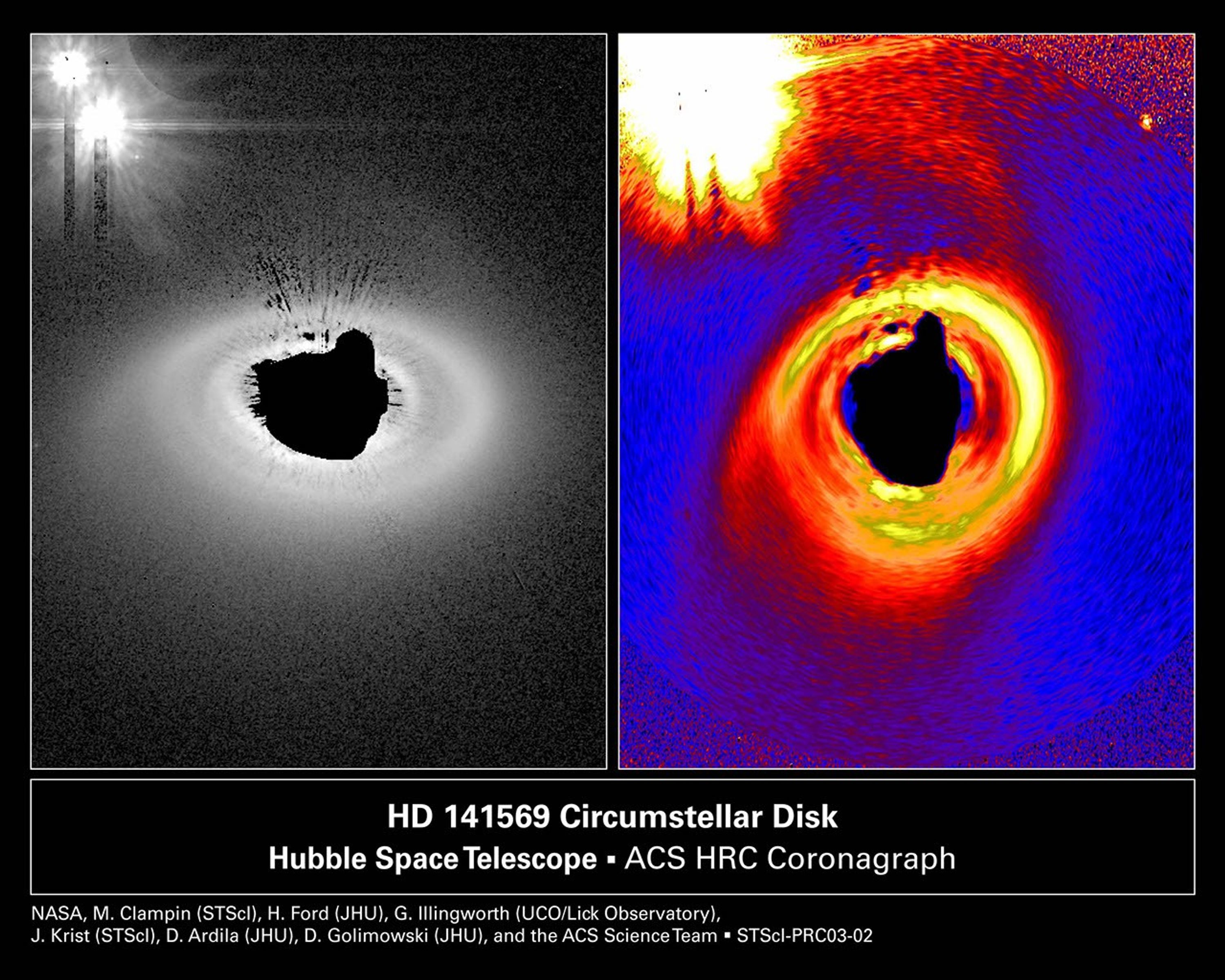
Complex Dust Disk, Expected Birthplace of Planets, Around Star HD 141569A
NASA Hubble Space Telescope's new Advanced Camera for Surveys (ACS) has given astronomers their clearest view yet of the dust disk around a young, 5-million-year-old star. Such disks are expected to be the birthplace of planets. The star, called HD 141569A, lies 320 light-years...
Share
Details
Last Updated
Mar 20, 2025
Contact
Media
Claire Andreoli
NASA’s Goddard Space Flight Center
Greenbelt, Maryland
claire.andreoli@nasa.gov









